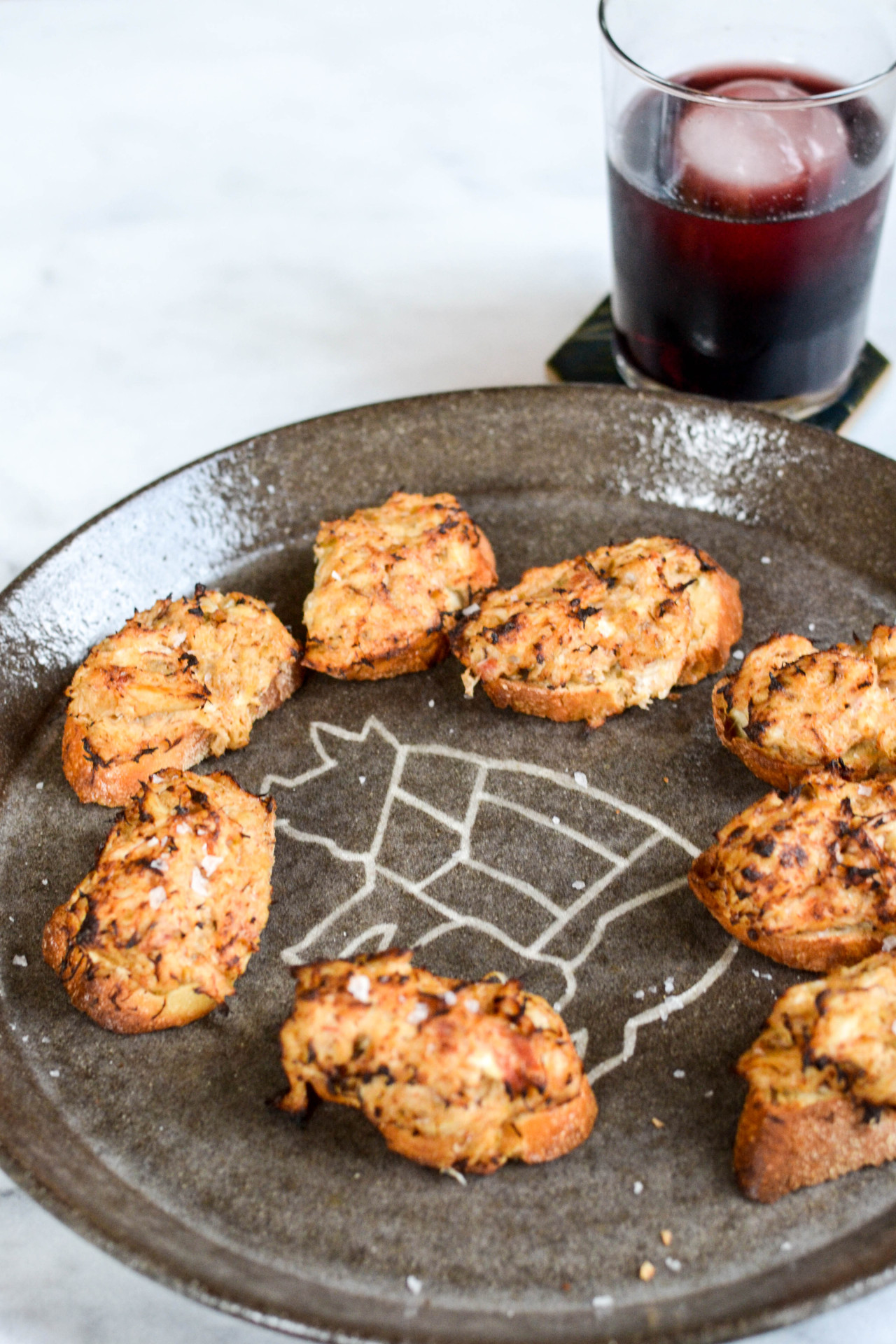
If you’re not from the Mid-Atlantic region, then the idea of crab dip is probably one you are familiar with in a meaningful way. My mom makes it as a cold dip, mixing canned crab, diced onion, and cream cheese into a ball and then smothering it in cocktail sauce, but here in Baltimore it’s often spiced with Old Bay and baked to golden-brown and bubbly deliciousness with extra cheese. Whether served with a pretzel or a bunch of pitas, Baltimore crab dip is a rich and comforting dish, and my mom’s cold version is a refreshing and spicy appetizer and my personal favorite of her typical pre-dinner spread.
Who knew that the Basque would feel the same about crab and cream cheese?
This recipe is adapted from Alex Raj’s The Basque Book in which she mentions that the Basque love themselves some Philadelphia cream cheese, otherwise known as queso Philadelphia. Knowing how much value they place on ingredients, it’s nice to see that Philadelphia cream cheese passes those strict standards.
This deviled crab gratin is not nearly as cheesy–the crab stays the star–and I’ve adapted it to make in an air fryer or convection toaster oven. I also spoon the crab mixture on little toasts, which serve as a nod to my mother’s crab dip spread onto crackers, which makes it ideal for snacking on while you work on the rest of your dinner. Or, for that matter, part of an entertainment spread. I’m genuinely looking forward to making this for people again; if anything, all of the cooking we’ve done in the last year has improved our prowess in the kitchen, and we want to share that with everyone!
Keep wearing masks, wash your hands, and get the vaccine when you’re eligible and we’ll all be able to do this very soon.

Txangurro (Deviled crab gratin)
Adapted from The Basque Book by Alex Raj
- 8 oz crab meat (I use claw, because it’s going to be all mixed with cheese)
- 1 ½ TB room temperature cream cheese
- 1 TB Basque sofrito (recipe follows)
- ½ tsp kosher salt
- 1 tsp sriracha
- Juice of ½ lemon
- 14-16 ½-inch slices of baguette
- Maldon sea salt for finishing (optional)
Basque sofrito
Adapted from The Basque Book by Alex Raj
- 3 TB extra virgin olive oil
- 2 sweet onions, cut into chunks
- ½ green pepper, seeded and cut into chunks
- Extra version olive oil
- 1 pinch safflower threads (optional)
- 1 TB guindilla pepper paste (recipe to follow)
- 2-3 plum tomatoes, crushed by hand
Combine the onion and green pepper in a food processor, working in batches if necessary. Process the onion and green pepper until they are both finely minced, and then place the mixture into a fine-mesh strainer and let the liquid drain for at least 30 but ideally 60 minutes.
Add the olive oil to a large saute pan and start to warm with low heat. Add the drained vegetables and a tablespoon of kosher salt. Bring the heat up to medium-high, cover the pan, and cook the vegetables for 10 minutes. Uncover the panUn and let cook for another 10 minutes, and then lower the heat and and let the mixture cook for two hours.
Raise the heat to medium and add the saffron (if using) and let cook for six minutes. Add the pepper paste and tomatoes and let cook for another six minutes until the mixture is a deep reddish brown color. Take the pan off the heat and let cool.
Guindilla pepper paste
Adapted from The Basque Book by Alex Raj
- 5 guindilla peppers
- Kosher salt
Place the guindilla peppers into a convection toaster oven set to 350 degrees and toast for 3-5 minutes until they are pliable. Let cool, and then stem and seed them as much as possible. Bring a saucepan of water to boil, salt it with kosher salt, add the peppers, and then cover and remove from the heat to let steep for 20 minutes. Remove the peppers from the water, add to a small blender or food processor, and add just enough liquid (be conservative here and add a littl more as you need it) to form it into a paste. This will keep for a week and will freeze for up to three months.